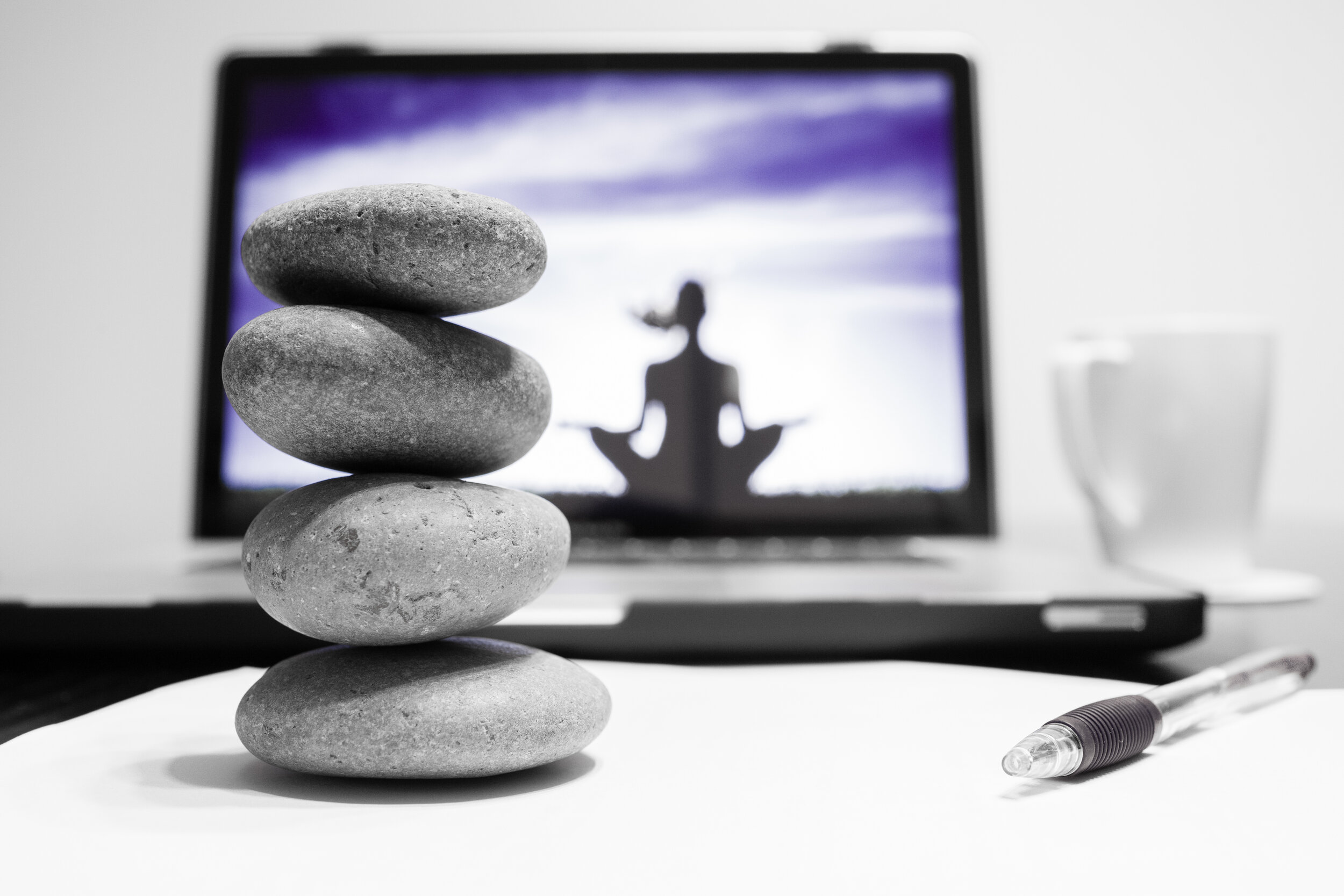
Zen Squirrel Blog
Seeking Harmony
I have officially experienced the post election blues. It has much more to do with the disconnect that I see and feel from humanity than who won and who lost. After a lifetime of avoiding expressing and feeling my own emotions, I have to say that sometimes this feeling stuff really sucks. I am feeling my own sadness and the heaviness of the emotions in those around me. Last evening I sat with myself, and I cried deeply. The division I see in our nation is so profound. This division impacts people of other races, religious beliefs, the LGBTQ community and their families.
Sometimes, you really have to feel something before you can move past it. Luckily, my amazing friends at Create Karma and I have been sharing a path of healing and acceptance during the past year. They have taught me to open my heart, and hopefully I have led them through some healing as well. I love them deeply. I have felt my feelings, and I am ready to move forward and take action as a leader for the wellness of our community and our nation.
This week I taught yoga classes encouraging my students to find a place of refuge in their own breath. I struggled to take my own advice, so I made a cup of my favorite tea, and found inspiration through reading. This gem of a quote had the greatest impact, so this is where I start moving forward.
“Happiness is when what you think, what you say, and what you do are in harmony.” — Mahatma Gandhi
Now I choose to practice finding this harmony, happiness and balance through the Yamas and Niyamas (10 principles of living) of yoga. If you have felt the feelings that you need to feel and are ready to move take positive action moving forward, here are the steps that I plan to take.
Ahimsa: compassion for all living things - I turn to a quote from Charlotte Bell. "My favorite description of ahimsa is of a dynamic peacefulness prepared to meet all needs with loving openness." I feel compassion for all beings who are being hurt or oppressed. This extends to my vegan diet. I am not apologetic, but maybe in order to be more balanced, I need to find actions that express loving openness rather than dwelling on sad or painful things.
Satya: commitment to the truth - Sometimes I have tended to hide my beliefs when they don't parallel those who I am around. It may feel easier for me that way, but it is a form of deceit. So to all those hospital employees who may be reading this, I voted for Clinton this year. There, I said it. I don't agree with her entire platform, but my personal beliefs are closer in line with hers than with Trump. Truthfulness - check.
Asteya: non-stealing - It may seem easy to think, I don't steal. Can we look a little deeper? The times that I choose to remain silent and don't stand up when #1 is being violated, I am stealing support from those who may desperately need it. Am I focusing on the news too much and stealing my attention from work that will be for a greater good?
Brahmacharya: non-excess - To me, this really has to do with how you use your energy. I choose to spend my energy in a constructive manner by avoiding too much time dwelling on things I cannot change, yet knowing when to use my voice. I will practice experiencing the difference.
Aparigraha: non-grasping - I will practice giving things to others as a sign of compassion. This may be expressed in a note or through baking. It will definitely be expressed through my financial and active work with Create Karma during this year's Extraordinary Give on November 18!
Saucha: purity - I will choose to keep my mind pure by increasing the time I spend in meditation and physical yoga practice. This can also be practiced through prayer and/or the study of religious text. I will take meditation breaks instead of coffee breaks. I will wear a mala as a sign of this commitment.
Santosha: contentment - I will continue to offer teachings of love, healing and balance. I understand that others will choose to express their voice in a different way. We are a free world and they are free to do as they wish. I am content with the fact that it is not my job to fix anything for others. Everyone has their own path.
Tapas: right effort - Now is the time to not only seek knowledge and beginning to apply what I have learned. Break old habits and find a way to make our lives and this world a better place. Keep zeal and enthusiasm for the things that I really believe in and place my attention there.
Svadhyaya: self study - I have had tremendous success in self study by becoming aware of my habitual patterns and beliefs. Sometimes that little voice in your head isn't our own voice or even the right thing to listen to (it may just be a little bad habit that you've picked up along the way). Sometimes my old habits seem like old friends, but they are not. It is important to find your true nature so that you can begin to break these old habits. This aspect of the path has given me the gift of the biggest heart opening, and I can't wait to see what else is in store! Study of religious text would also apply to this category.
Ishvara Pranidhana: dedication to the highest (God) - Yoga does not tell us how to define God. That is very personal. Anyone with strong religious convictions should cling to them. Otherwise, how do you connect with the divine? You could connect with this through time in nature or by looking for the highest expression of goodness in every situation.
The funny thing is that just taking the time to write these words and dwell on these steps has me feeling better about everything. Now is the time to put my yoga practice into action. I call for you to join me in taking all or some of these steps. We can make our world a better place.
Lessons From Nepal #2 - Daily Practice

My Yoga Practice in Pokhara, Nepal.
Here at home, I frequently hear the yoga community speaking about a goal of daily yoga practice. There are yoga challenges set up to encourage us to practice yoga poses every day. We may speak about getting our "yoga practice in", meaning exercise, and something to do and help us with the rest of our day. Yes, physical exercise and yoga postures are important, but isn't there more?
I observed several friends in Nepal practicing yoga, even though they have never been in a single yoga pose, let me explain. While attending a Yoga Nidra class with Beryl Bender Birch, she told us she is frequently asked if she practices yoga every day. Her answer was perfect, "yes, I practice yoga every day, but I do not practice asana every day". Asana (the poses) are just one of the 8 limbs of Patanjali's Yoga. The other 7 limbs are all vital to a yoga practice!
-
Yamas (restraints)
-
Ahimsa: nonviolence
-
Satya: truthrulness
-
Asteya: nonstealing
-
Brahmacharya: countinence
-
Aparigraha: noncovetousness
-
-
Niyamas (observances)
-
Saucha: cleanliness
-
Samtosa: contentment
-
Tapas: heat, zeal, discipline
-
Svadhyaya: Study of spiritual scriptures and self
-
Isvara Pranidhana: surrender to God
-
-
Asana (yoga postures) Through the practice of the physical postures of yoga, we develop discipline, focus, strength, ease, clarity, and balance our energy. This is a good prep for daily life, or for a meditation practice. It is not the only part of yoga.
- Pranayama (breath control) Literally translated as "life force extention", breath control is intimately connected to our nervous system. Breath work provides a link between the breath, the mind, and the emotions. I consider it to be vital, and begin each personal practice with a little bit of breath work. I hear feedback from students that this is a helpful practice that they bring into their daily lives.
-
Pratyahara (withdrawl from the senses) Moving our attention away from physical sensation allows us to focus inward. According to Yoga International, "pratyahara exercises require concentration and the ability to focus on the inner sensory and energetic experiences of the body". So you are not asleep, and you are not lost in your phone or your to do list. Your mind has an inward focus.
-
Dharana (concentration) During asana, our focus changes, during dharana, our attention falls on a single mental object. This may be an image, a sound, or a specific energetic location in the body. This practice can be considered the gateway to meditation.
-
Dhyana (meditation) Durning meditation, there is an unwavering flow of concentration. Medical science now supports the fact that meditation is a very beneficial practice on it's own. Although my friend in Nepal meditates for 2.5 hours every day, you can start with as little as one or two 5 minute sessions and find a practice that works for you.
-
Samadhi (bliss) When we experience samadhi, the mind is free from all distractions, and we experience inner consciousness & light. You may wish to think of this as heaven, enlightenment, or just peace.

Boudhanath Sthupa - Kathmandu, Nepal
I may not have practiced asana every single day while I was in Nepal, but I did practice and observe yoga every day. I observed practices and ways of life that will forever change the way I think. I observed people facing extreme hardship with a smile and a shake of the head ("no problem" - just like in Jamaica). If it was something they couldn't fix, they just faced it & moved on. I observed women happily washing their clothes on a rock in a stream. I was welcomed whole heartedly into people's homes, and allowed to interact with their children. I observed the daily prayers of monks. I walked with hundreds of dedicated people doing their daily meditative walks around the Boudhanath Sthupa, spinning prayer wheels and chanting Om Mani Padme Hum. We witnessed people buying brass objects for honoring parents who had died and those people preparing for the festival. The people of Nepal have impacted my practice off the mat in so many ways!
Don't get me wrong, I love asana practice. My teaching style is rooted in physical alignment, strength, stability and self observance, but there is so much more to yoga. If you don't manage to fit in any asana today, think like a Nepali, "no problem". You can always practice a little meditation, or any combination of the 8 limbs. They're all yoga (even Beryl Bender Birch thinks so).
Namaste friends,
Beth




